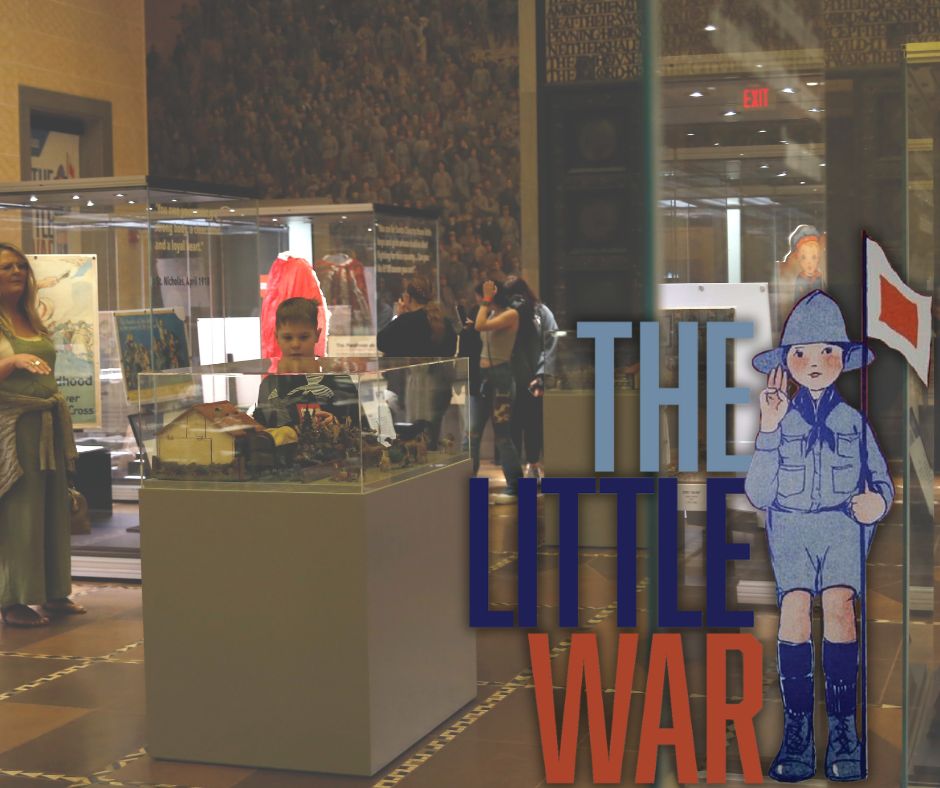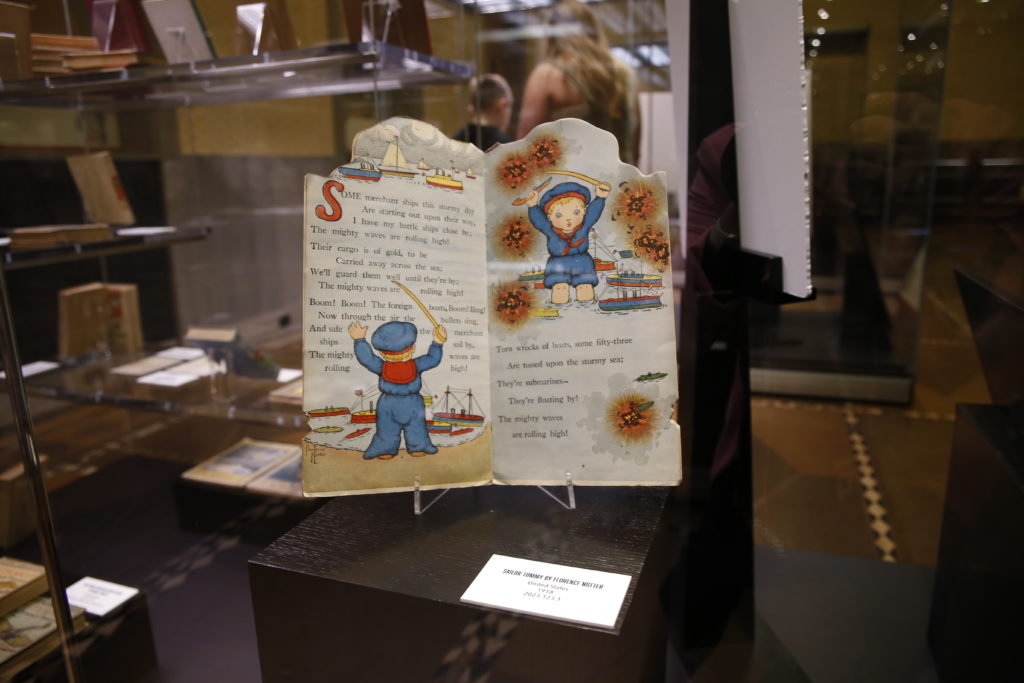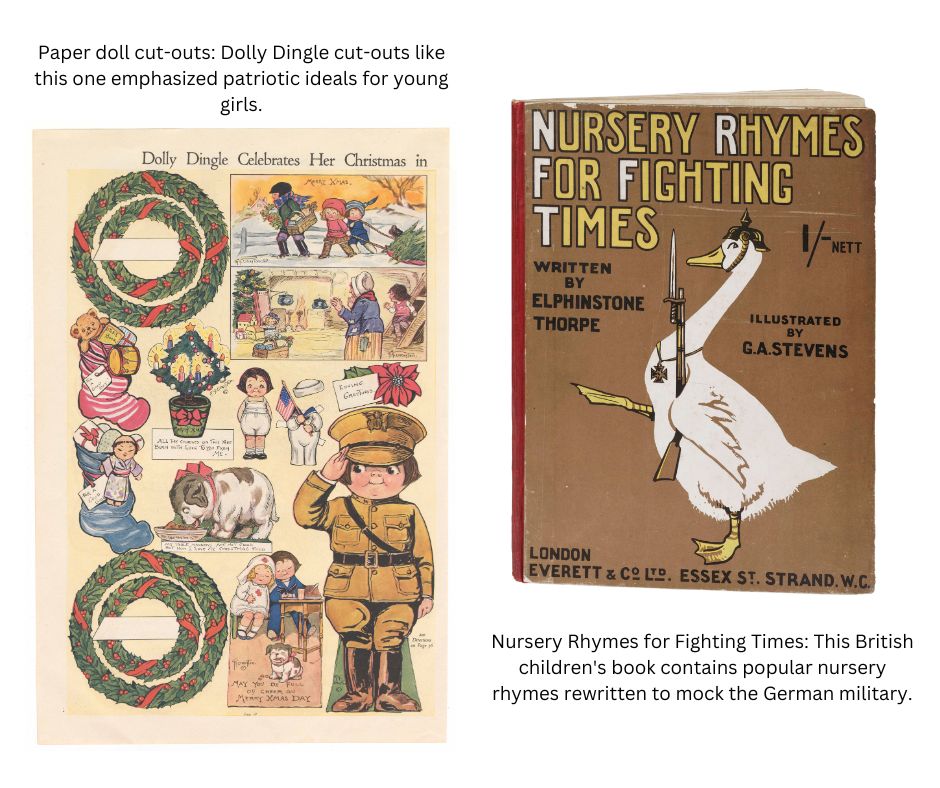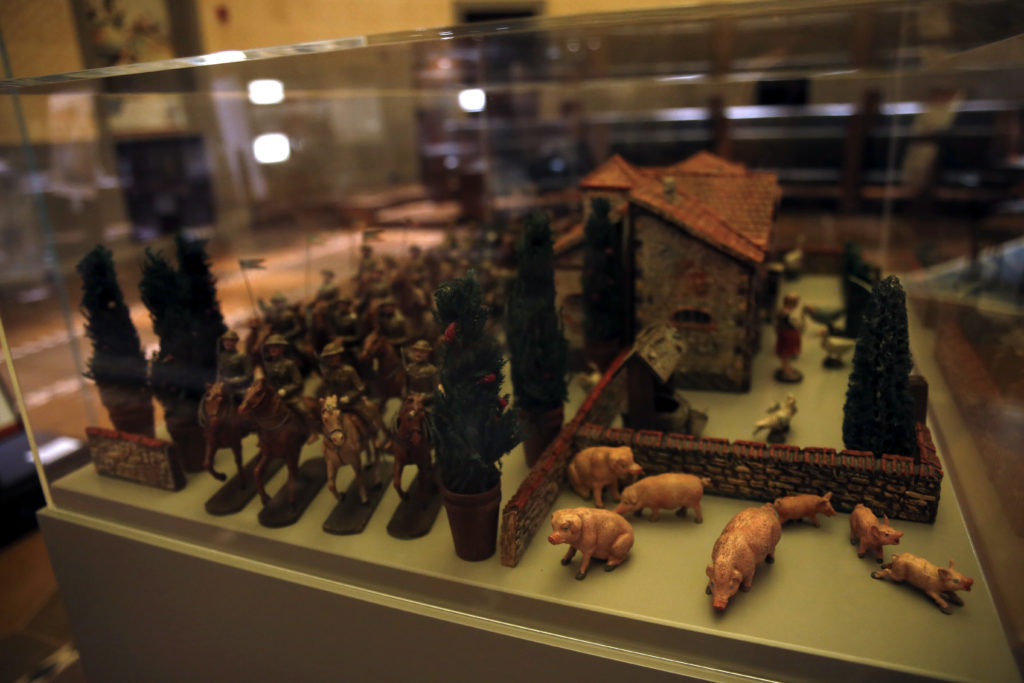Sponsored content
What does a world war look like to a child?
That’s the question posed by a new, original exhibit at the National WWI Museum and Memorial.
“This is the first exhibit of its kind,” says Natalie Lovgren, specialist curator, for whom this is a dream come true. The Little War exhibit is her idea, and now it has been realized “exactly how we envisioned it,” she says.
The museum’s recent acquisition of a collection of postcards sent from and to people who lived in the Great War’s combatant nations piqued Lovgren’s interest. “As I was looking through the postcards, some of them with imagery that would appeal to a child, I wondered what living through a war was like for them,” she says. “When I started researching this topic, I found over 150 artifacts in the museum’s collection that could tell this story.”
During World War I, allied countries included Britain, France, Russia, Italy, Japan, and the United States. The Axis powers included Germany, Austria-Hungary, the Ottoman Empire, and Bulgaria. Yet no matter which side the children were on—not by choice, but by circumstance—there was an overall theme that surprised Lovgren.
“Instead of being shielded from war, children were mobilized to support it,” she says. “Toys, games, and play military and nurse’s uniforms all encouraged children to do their part.”
From now until February 2025, The Little War engages children and their grown-ups to understand the Great War from a child’s perspective, using imaginative play, original toys and games, photos, and other artifacts of the period.
Storybooks featured children as patriotic heroes and heroines. Sheet music let them play patriotic songs at home. Cut-outs and paper dolls encouraged them to act out brave scenarios. Photos of the period show a four-year-old girl with a toy rifle posing with American soldiers and a little boy posing in a soldier’s uniform made by his father, a New Jersey tailor. Liberty Boy dolls were modeled after American doughboys.
One of the most shocking examples is a 1914 British book Nursery Rhymes for Fighting Times, in which familiar rhymes were reworked to vilify the German military. “It was propaganda for children to fuel and fester hatred,” she says.
Books, toys, pamphlets, and costumes drove home the idea that children were important to achieving victory. But rather than being the heroes of the story, children faced a different reality. They said goodbye to family members who left to fight and perhaps never came back. In battleground cities and villages, children had to escape with their families, facing hunger, uncertainty, and hardship.
Museum goers of any age can experience the exhibit, and then enjoy a hands-on sitting room with dominoes, puzzles, and books from the time period. The sitting room gives children and adults time to reflect on the themes of the exhibition in a relaxed environment.
It’s all food for thought and part of the ongoing stories that the museum is telling.
“It’s an exciting time for the museum,” says Lovgren. “There is always something new to see or do. In addition to The Little War, we also have a new interactive about the role of animals in World War I. We also look at the types of planes and ships that featured in the Great War.”
Since it opened in 2006, the National WWI Museum and Memorial has welcomed over 2 million visitors. In 2014, the Museum and Memorial received a designation from Congress, effectively recognizing it as the National WWI Museum and Memorial.
The National WWI Museum and Memorial is America’s museum dedicated to remembering, interpreting and understanding the Great War and its enduring impact on the global community.
Plan your visit today!
For more information and to purchase tickets, visit theworldwar.org







